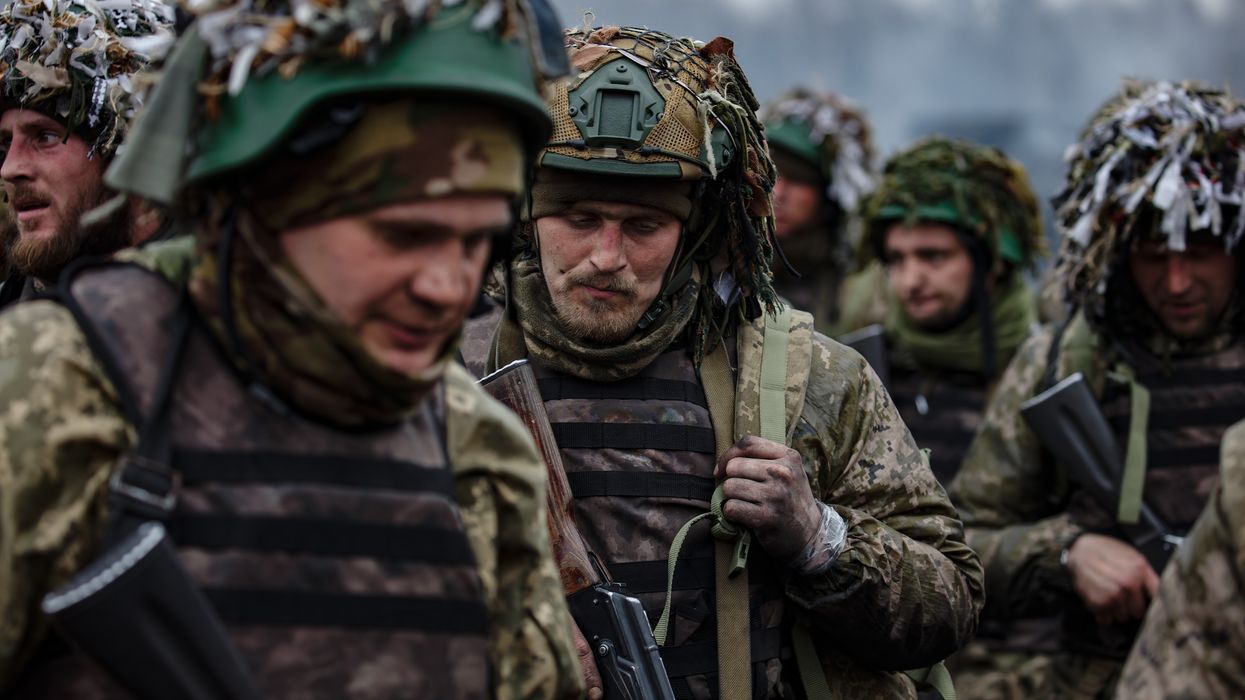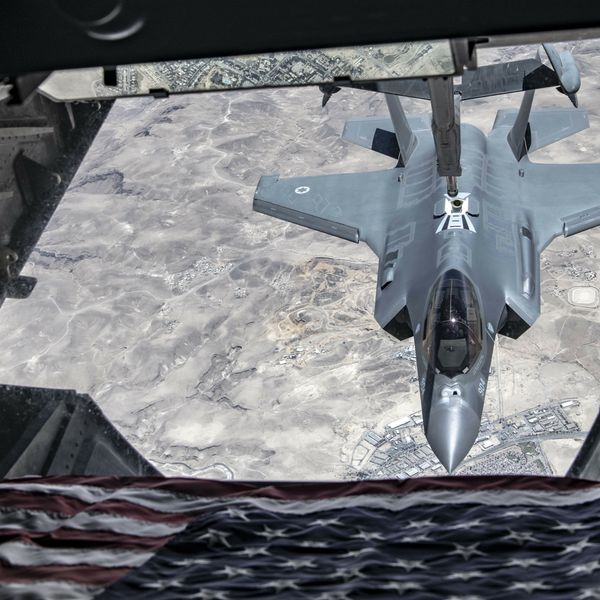It is time to bury the militarized American style of policing now widespread in the 18,000 police departments in the United States. Say “defunding” or “dismantle,” but it is time for America’s police departments to be abolished and replaced by a new model of public safety. The president’s Executive Order, the Senate Republican bill, even the Democratic bill in the House are tired, retread prescriptions for incentives and encouragement of change; they do not change the fundamental realities of policing.
America’s militarized policing is steeped in racism; the model inherited its traditions and attitudes from the management of slavery. Its behavior is increasingly militarized in doctrine, practice, and equipment. This toxic mix has led to stunning repetition of provocative crowd control practices and equally repetitious police violence against America’s black citizens.
As a scholar and former policymaker in the national security world, not a specialist in policing, I am struck by the intersection and mirroring of a militarized foreign policy and militarized policing, both tone deaf to their essential missions — security. Policing in America not only mimics the doctrine and equipment of the military, but there has been a direct connection between the two “militarizations,” through training and subsidy.
In the videos of crowd control and arrests, America’s police forces look increasingly like the military, complete with full body armor, shields, face coverings, and an ever-growing array of potential lethal technologies on their belts. They carry and are surrounded by military weaponry — including armored vehicles designed to withstand the blast of an improvised explosive device used by insurgents in the Iraq and Afghanistan wars — provided at generous discount through the military’s 1033 program that transfers surplus military equipment to the police.
Whether dealing with protestors, demonstrators, or individuals — policing doctrine emphasizes the unrestrained use of massed, “decisive” force in large numbers intended to intimidate, disperse, and dominate, an ironic twist on the Powell Doctrine the former Chairman of the Joint Chiefs of Staff articulated during the 1991 military operation to remove Saddam Hussein’s forces from Kuwait. The connection between military doctrine and tactics and policing is organic, through the post-9/11 focus on counterterrorism; training programs in CT have included thousands of American police.
As public spending for social services, education, housing, and civilian community well-being have eroded over the years, police forces have been given an expanding array of missions for which they are poorly, even counter-productively trained, including managing behavior around drug use, dealing with mental health dilemmas, intervening in family disputes, and border and immigration enforcement, border construction, among other policies.
If it looks like a military, acts like a military, is trained and equipped by the military, and is loaded up with missions that are underfunded elsewhere, it must be a quasi-military force. The pattern is strikingly familiar: be the front edge of security, seek dominance, use the most advanced and lethal equipment, and assume missions that are not core to military operations.
In the global arena, the consequences of militarizing our overseas engagement have been almost completely counter-productive. The military has not prevailed, and has failed at its ancillary missions, depleting its credibility, just as the police has today. The high technology of the military and the police has been inappropriate to the missions they have been given.
Relying on the military to perform non-core missions like governance and economic development has systematically weakened the agencies responsible for those missions. As police become social service providers, domestic jobs, housing, education, and health departments have been stripped of resources. Police budgets today — $6 billion with over 35,000 cops in New York City — are devouring municipal budgets.
Worst of all the more American foreign policy relies on the military, the more blow-back there is from the targets of that policy — countries rebalance against the U.S. and the nation’s reputation declines. Force begets force in our streets, not quiescence. And the gap between the police and the communities they ostensibly serve widens.
The military model of policing does not provide public safety for all Americans; it has not for more than a century. And it cannot be reformed. Historically, police forces find their origins in patrols that enforced the system of slavery in the South, and chased fugitive slaves to the North. The model was adopted across the country to enforce Jim Crow and segregation, more broadly, to break up political protests, and combat union organizing, and, in the more recent past, to fill American prisons disproportionately with African Americans. The police became tools of order, but not always tools of safety.
The police mission has too often been the enforcement of a social order that benefits white citizens, but keeps African Americans in their place. That mission has included: ensuring that injustice, inadequate access to education, health care, and housing, and higher rates of unemployment do not lead to exactly the kind of protests we have seen since George Floyd’s murder.
There will not be American peace until we rebalance the portfolio, invest directly in correcting those conditions for black Americans, and open up true equality and justice for all our citizens. That means fundamental change. Claims of “Law and order” simply perpetuate the injustice. And the reforms being put forward by Joe Biden and the Democratic Party in the Congress are simply “palliative care,” half-measures, many of them tried before, band aids like those that followed the Los Angeles and Detroit protests in the 1960s.
This is the moment to replace “military security” with a model of “domestic equality and justice” in policing, the criminal justice system, and socio/economic policy much as it is a moment to rebalance our global engagement away from the military.
The stranglehold the Fraternal Order of Police has had on reform makes this necessary. Better record-keeping, incentives for good police behavior, reformed training, more public data all have been tried in the past; all have failed to bring about basic change. They do not help weed out the bad apples; the barrel is rotten, with only a few good apples left.
If we are going to end knees on necks, carotid artery strangling, slams against police car hoods, dark police vehicles cruising low-income neighborhoods, lights flashing, massed police forces with shields and clubs, tear gas, pepper bombs and spray, clubbing and pushing, and many other practices, it cannot happen with incentives and palliative care.
“But what about the criminals,” my liberal friends ask, “do they just get to roam the streets amid chaos and anarchy?” This is largely a white fear, fear of the unknown, a fear of change. It does not deal with black fear, the fear of police violence at the slightest provocation, the fear of losing a child to an out-of-control police officer; the daily fear of walking the streets while black.
It is unfounded. There are many good, realistic, effective models for public safety, replacing the existing police forces. Communities like Camden, NJ, are lighting the way. Crime-ridden Camden abolished the existing municipal police force and replaced it with a re-recruited county-level force, different doctrine and tactics that have reduced murder rates and violent crime. Minneapolis and Oakland are considering similar approaches.
A new “public safety” model is emerging. One that ends military street doctrine, removes military equipment and weapons, diminishes the use of crowd control through tear gas, rubber bullet assault, shields, and clubs. One that ends stop and frisk and broken window policing. One that removes military equipment and returns it to military depots, replaces racist officers, fundamentally changes recruitment and training, and reduces the size of the force. And more: an end to the “qualified immunity” that has protected misbehaving police; citizen review boards with teeth, mayors and city councils with the intestinal fortitude to take on the FOP. And the redirection of resources to badly needed interventions on housing, jobs, social services, and mental health.
As with America’s global engagement, we need to demilitarize. Our policing today has failed and is an embarrassment to the United States abroad. It is time to start over, with a focus on justice, equality, and community control over the police.
















